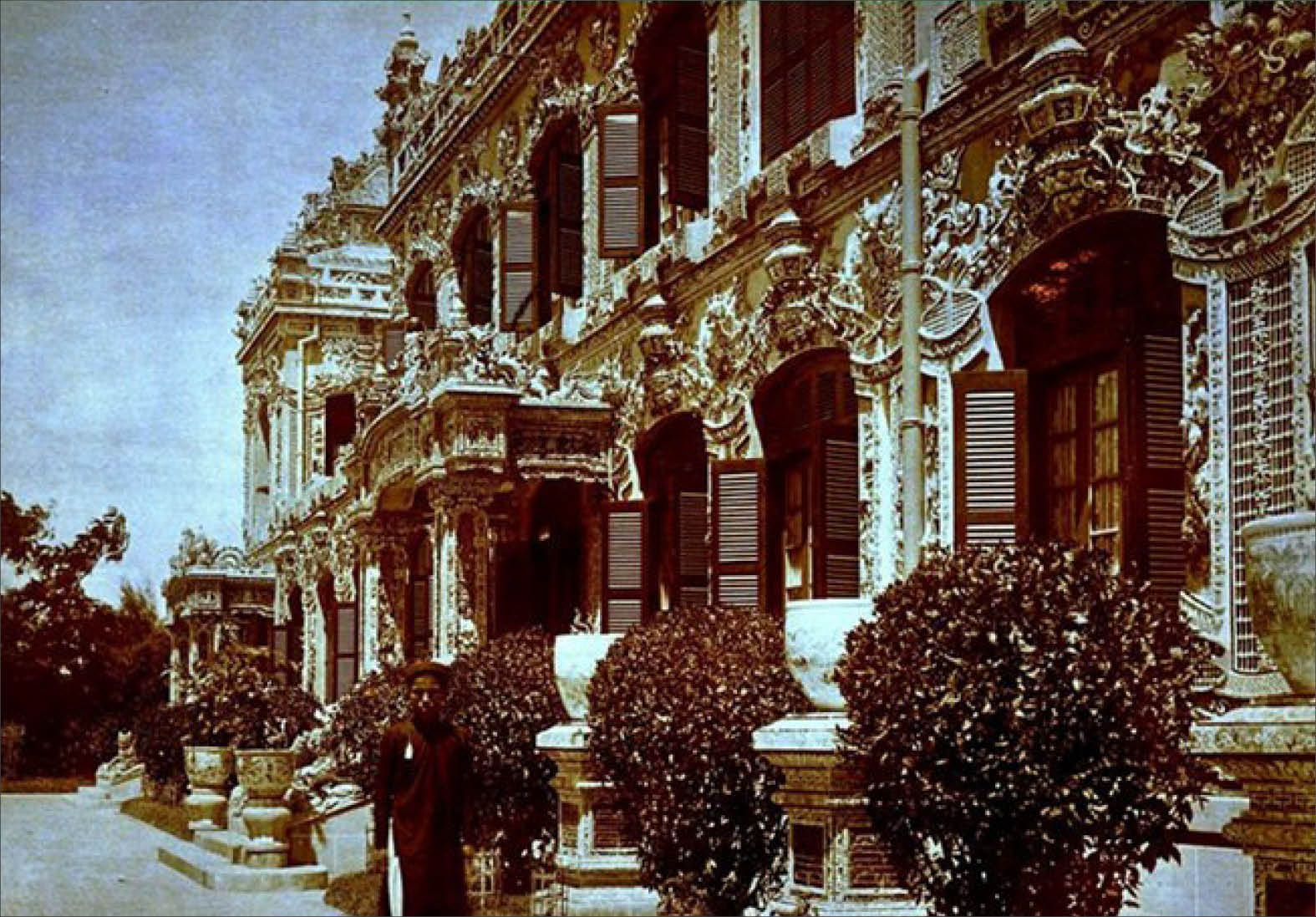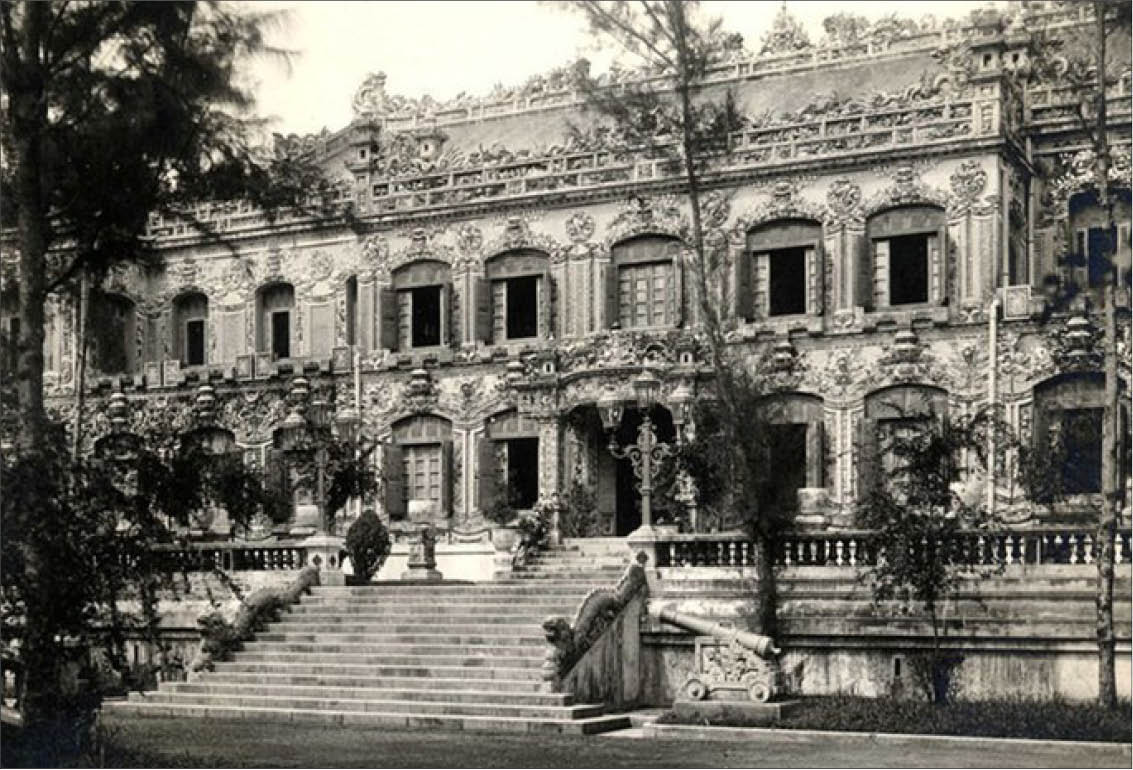It is expected that Kien Trung Palace - which was closely connected with historical events of historical figures such as Emperors Minh Mang, Duy Tan, Khai Dinh and Bao Dai - will be reshaped in five years as if it were not destroyed by the war.

Kien Trung Palace in its heyday
Kien Trung Palace is located at the ending area of the Forbidden City - Hue Royal Citadel. According to historical documents about the Nguyen Dynasty, it was called Minh Vien Lau (1827 - 1876) under the reign of Minh Mang. In the reign of Duy Tan, it was reconstructed and renamed Du Cuu (1913 - 1916). Emperor Khai Dinh renamed it Kien Trung in 1916 and had it fully constructed in 1921, and it remained unchanged under the reign of Bao Dai. In 1947, it was destroyed and became a ruin, only retaining its substructure until recently.
Going along historical stages under different rulers, the land of Kien Trung Palace witnessed changes of the work, both in architecture and in function. From the time of Minh Vien to Du Cuu, it was originally the wooden house for royal stay and sightseeing. In the reign of Emperor Khai Dinh, Kien Trung Palace was the royal residence and office. Finally, in the reign of Emperor Bao Dai, there was an annex for recreation and gallery as they were found in Western mansions.
Dr. Tran Minh Duc, former director of the Central Vietnam subdivision of the Institute for Building Science and Technology, said that Kien Trung Palace witnessed the birth, progress and failure of the national governing policy of the last monarchy in Vietnam.
In the Revolution of August 1945, this was the venue for negotiation between Emperor Bao Dai and representative of Viet Minh Government about the abdication procedure. It was where Emperor Bao Dai made his abdicating declaration, with a well-known patriotic saying “I am better a citizen of an independent country than a king of a dependent country.”
Dr. Tran Minh Duc emphasized, “compared from the perspective of history, Kien Trung Palace was comparable to Independence Palace in Saigon. Both places witnessed the victory of the Vietnamese working class led by the Vietnamese Communist Party, gaining national independence and democracy. The difference is in the way they were taken over: while the army forces came into the Independence Palace on tanks, the revolution representative came to take over Kien Trung Palace in peace. This historical value lends plausibility to the restoration of the palace.”
As Kien Trung Palace was completely destroyed and there was no other work that had a similar style of “western architecture combined with traditional interior design”, researchers had to start different studies 5 years ago, in order to identify the values of the relic, the space, the size of the work, architectural and artistic style, structure and materials.
To form a scientific background for the restoration of Kien Trung Palace, Hue Monuments Conservation Center has used information from the reports in the Bulletin of Friends of the Ancient Hue (Bulletin des Amis du Vieux Hue, BAVH, in French), Đại Nam Thực Lục Chính Biên Đệ Lục Kỷ Phụ Biên (‘Dai Nam History, volume 6, supplementary edition’), the Royal Records of the Nguyen Dynasty, research studies by authors such as Phan Thuan An, Phan Thanh Binh, Nguyen Ba Chi, Daniel Grandclément, Nguyen Dinh Dau, Pham Khac Hoe, Tran Huy Lieu, L. Cadière, Ly Nhan Phan Thu Lang, and Nguyen Huu Thong.

Kien Trung Palace in its heyday
Fieldwork at the relic
Hue Monuments Conservation Center will invest in the restoration of Kien Trung Palace an amount of 123 billion VND (5.5 million USD), 23 billion VND of which serves as a contingency fund. The investment capital comes from the Program on Cultural Development and other legal mobilized capitals. The work is expected to complete in five years’ time, in terms of the architecture, technical infrastructure as well as surrounding green trees.
According to Dr. Phan Thanh Hai, the director of Hue Monuments Conservation Center, from the comparative perspective, the amount of 5.5 million USD spent on the restoration of the grand Kien Trung Palace from a ruined relic is not as much as the investments into the reconstruction of other World Heritages. For example, Korea spent some 30 million USD on the recovery of Namdaemun (the Main Gate of Hanyang, burnt in 2008) and Japan invested more than 20 million USD for the reconstruction of the Suzakumon (the southern main gate of the ancient Nara). The rehabilitation of Kien Trung Palace greatly contributes to the restoration of the values of the Nguyen Dynasty’s architectural heritages.
“Kien Trung Palace is one of the five major large-scaled architectural works on the central ramp of Hue Royal Citadel, together with Thai Hoa Palace, Can Chanh Palace, Can Thanh Palace and Khon Thai Palace. Among these palaces, only Thai Hoa Palace is still in existence. Before the commencement of the restoration, we will hold an exhibition in front of the relic of Kien Trung Palace to introduce to the public and visitors this project,” Dr. Phan Thanh Hai added.
By Dong Van
Photos provided by Hue Monuments Conservation Center
